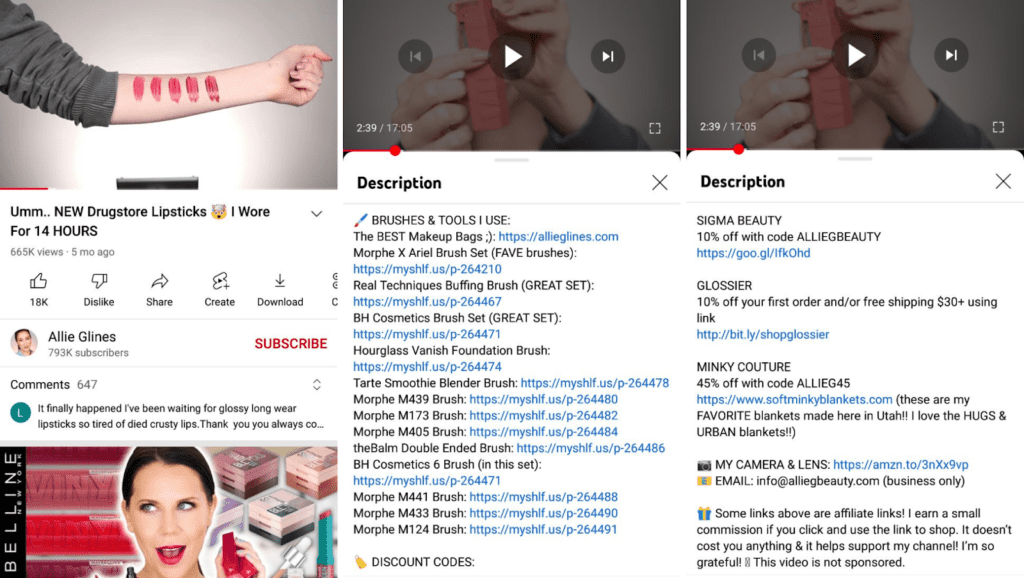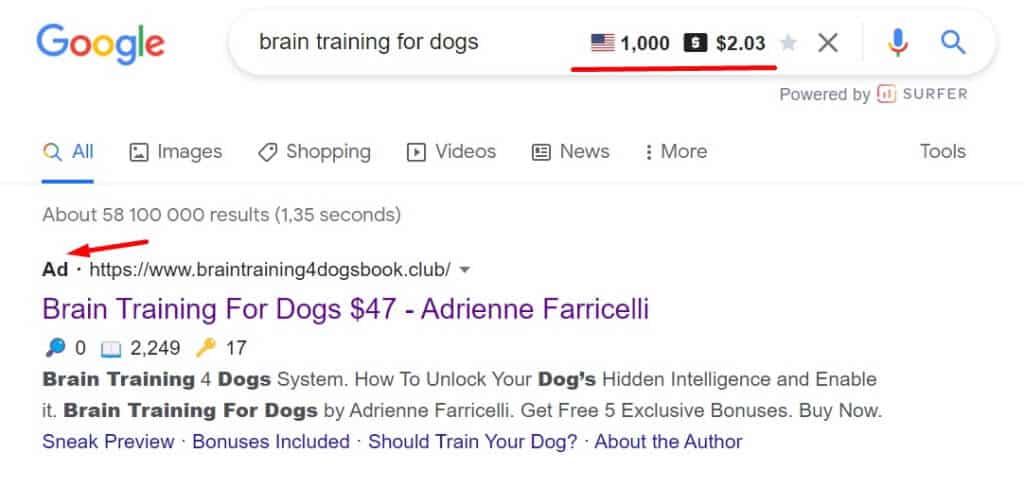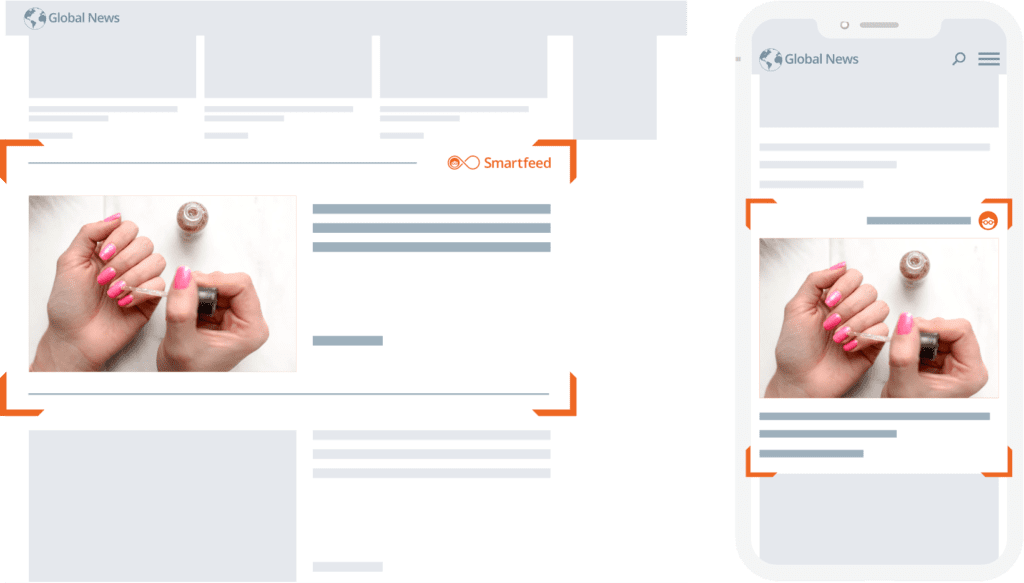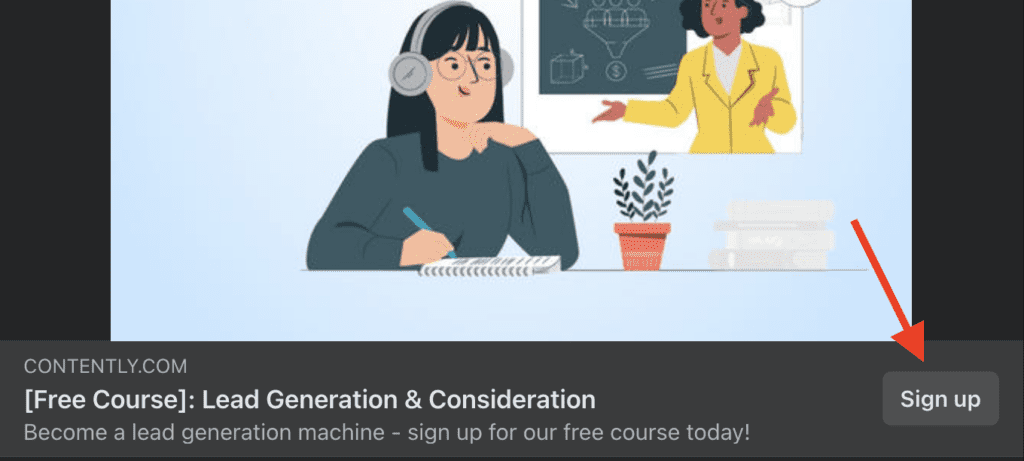The 10 Best Traffic Sources for Affiliate Marketing in 2025

“Traffic is the lifeblood of any online business.”
There’s nothing truer when it comes to affiliate marketing.
But while that is true, choosing the right traffic sources is just as important as getting traffic.
In this article, I’ll discuss the 10 best traffic sources for affiliate marketing, divided into organic and paid traffic – but first, I’ll reveal the top 5 ClickBank traffic sources that we’re seeing for ClickBank’s top affiliates right now!
Whether you’re just starting with affiliate marketing or are an experienced marketer looking for new traffic sources, this article will provide you with the information you need to make an informed decision about your choice of traffic source. Let’s dive in!
Free vs. Paid
Before we dive into the list of traffic sources, let’s first briefly discuss the differences between organic and paid traffic.
Paid traffic is a form of advertising where you pay for ads to drive people to your website or landing page. This can be effective since you’re paying for guaranteed viewers or visitors, but it also comes with high costs that you must factor into your budget.
On the other hand, organic traffic is “free” (certainly in comparison to paid!) and comes from natural search engine rankings, referrals from other websites, and more recently, from AI chatbots and LLMs that provide your site as a source for their output.
Organic isn’t as quick to see results as paid traffic, but it carries a lot of trust with it and can be just as effective if you have the right strategies.
Both have their place and both can work well for all types of affiliate products. As you’ll see, there’s a healthy does of both in our list of top traffic sources!
The Top 5 ClickBank Traffic Sources
ClickBank has a wealth of data at our disposal, and one of the most exciting things we get to see internally is HOW our affiliates are driving traffic and making sales!
So, without further ado, let’s take a look at the top 5 affiliate marketing traffic sources on ClickBank across all ofers from the past 90 days (measured in gross sales):
And as a bonus, the runner-up in position #6 is Google Ads with an impressive 1.34% hop conversion rate, affiliate EPC of $0.80, and average payout of $67.19.
ClickBank Affiliate Traffic Breakdown
So, what can we learn from this data?
Well, without getting into specific sales numbers, I can say that Facebook Ads is far and away the most popular and high-grossing source of traffic for top affiliates on ClickBank. This means a LOT of people who are finding affiliate success are masters of Facebook Ads!
But at the same time, plenty of affiliates are getting sales through these other traffic sources.
And your success will depend a lot on the kind of affiliate offer you’re promoting, including its format (physical vs digital), its niche (health and wellness, make money online, survival, spirituality, etc.), and its ideal target audience.
Affiliate Profitability
Beyond that, gross sales don’t tell us which affiliate type is the most profitable – short of asking each affiliate about their total costs compared to income, there’s just no way for us to know that.
Generally, organic will have higher margins, because your costs to get traffic are more about investing time into creating quality content. Obviously, content production isn’t free, especially with video – but if you’re going to create organic videos or video ads, you’re still going to pay a whole lot more to get your ads in front of people.
On the other hand, paid traffic is a great way to reach NEW people who you haven’t already marketed to before. And a lot of a top products on ClickBank are geared toward a cold traffic audience – moving them from curiosity to interest to a purchase desire, all in a single touchpoint. Amazing!
Another interesting point is refund rate. I can’t get into exact numbers, but I can say that we see higher refund rates (by at least a few percentage points) through any of the paid channels compared to email or organic, which has a lot to do with the existing relationship and high buyer intent of people who you’re talking to. This effect can also cut into margins, whether you’re an affiliate paid on a RevShare basis or getting a flat cost-per-action (CPA) commission per sale.
Choosing Your Traffic Channel
In the end, each traffic channel is different, so you can’t really compare their specific stats in apples-to-apples way – and numbers can also vary widely from affiliate offer to affiliate offer.
But I hope that knowing these numbers can give you a reasonable benchmark for your own stats on your chosen traffic channel(s)!
With all of this in mind, let’s drill down a little deeper into the different traffic sources at your disposal – both free and paid – as an affiliate!
Free Affiliate Traffic Sources
Okay, let’s talk free traffic for affiliate marketing.
With “free” traffic, you have to put time and effort into content creation and building a brand to reach an audience, because you’re not directly paying to get your message in front of people.
Below are the top 5 traffic sources for organic or “free” affiliate marketing. (And for more on free traffic, we have a full guide to getting free traffic for affiliate marketing. Feel free to check that out!)
1) Social Media
Using social media channels like Facebook, X/Twitter, Instagram, TikTok, and Pinterest can effectively drive organic traffic to your pages and build relationships with potential customers.
The type of content you post will depend on the platform, but almost any kind of content can be used to reach potential customers and build relationships. Focusing on value-driven content and engaging with followers can lead to better conversion rates.
Want to know more? We have a full quickstart guide for affiliate marketing on social media.
2) Search Engine Optimization (SEO)
Search engine optimization (SEO) is the process of optimizing your website and blog content so that it ranks higher in the search engine results. When you rank high on Google, Bing, or even popular LLMs like ChatGPT, you’ll increase the organic traffic to your web pages.
SEO takes time to get the best results, but optimizing for relevant keywords and creating quality content will increase your organic traffic over time. As an affiliate, using the right keyword research tools means you can find the best keywords for product reviews, how-to guides, listicles, and more. You can then create content based on those keywords for better ranking potential.
And of course, if you don’t want to write the content from scratch yourself, you can lean on AI tools like Ember AI from ClickBank to do the job!
3) Email Marketing
Email marketing is one of the oldest forms of online marketing, yet it remains one of the most effective traffic sources for affiliate marketing.
As you build up your list, you can send personalized emails to potential customers with valuable content and affiliate offers. You can also use email campaigns to nurture leads until they’re ready to buy or retarget them after a sale.
4) Video Marketing


Organic video content has become increasingly popular in recent years, so it’s no surprise that video marketing on YouTube, Instagram, TikTok, and other social platforms has become an effective way to drive organic traffic to an affiliate offer.
Creating engaging videos that contain valuable how-to information or helpful demonstrations related to your chosen product will give potential customers a better understanding of what they’re buying, while also showing them why they should choose your recommended product or service over someone else’s.
As always, “watch time” is the most important factor for successful video content. As an affiliate, you need to make videos that are engaging and contain helpful information that viewers actively want to know. If you can address their needs and solve their pain points, your audience is more likely to buy whatever you want to promote – especailly if you pick high-converting affiliate products that are most relevant to your audience.
5) Guest Posting
Guest posting is an oldie, but a goodie! It remains one of the most effective ways to push organic traffic from external sources on the web. When allowed by editorial guidelines, you can place affiliate links directly in your guest posts to drive people to an affiliate offer – even if they don’t know you or the product you’re promoting yet!
You can also use guest posts to build relationships with other bloggers and websites in your niche, which can help you generate referral traffic. In this case, one of the main benefits is that you can link to specific posts on your site that make the most sense for the guest post topic.
For example, if one of your guest posts gives advice and inspiration when choosing designer lighting, you can show your expertise in lighting trends by giving your best tips.
When you embrace guest posting and get placements all over the web related to your niche, you’ll be able to increase your organic traffic and boost conversions from affiliate links.
Paid Affiliate Traffic Sources
Now, let’s turn our attention to paid traffic.
Paid traffic sources are platforms where you pay for digital advertisement impressions or clicks, typically on websites, search engines, and social media sites. Your chosen format can include text ads, image-based ads, video ads, or a combination of these.
We actually put together a full list of 20+ paid traffic sources for affiliates to try, but the following five sources are the most notable places to consider for your affiliate marketing campaigns!
6) PPC Advertising Platforms (Google Ads and Bing Ads)


Pay-per-click (PPC) advertising platforms such as Google Ads and Bing Ads are great ways to get your affiliate links in front of potential customers. You can target specific keywords or geographic locations with PPC campaigns and only pay when someone clicks on your ad.
This is also a great choice because you’re able to pick keywords that are associated with buying intent – such as “best of” or “x vs y” with relevant products or brands.
Getting started with affiliate marketing through Google Ads in particular can be a great way to get high-quality leads and drive sales quickly!
7) Display Advertising
Display advertising involves using banner ads to promote your product or service. This type of advertising is usually done on websites that have a lot of traffic, but it can also be used as part of retargeting campaigns!
By placing ads on relevant sites, you’ll be able to get more exposure for your affiliate links and increase conversions. Plus, if your product is more on the visual side, using display ads is a great way to reach potential customers’ interest.
For example, promoting a collection of dresses as an affiliate might be best served by using display ads that show off the dresses in an eye-catching and creative way, rather than just using text ads or links.
8) Native Advertising


Native advertising is a great way to get your affiliate links in front of potential customers without being too intrusive. This type of advertising involves posting ads that look like content – hence the idea of “native” advertising – on websites or platforms related to your product or service.
The key with native ads is to create content that blends in with the other content on the page. This will make it less intrusive and more likely to be clicked on, which can drive more organic traffic to your pages.
On ClickBank, we’ve recently partnered with an exciting native ads network called NewsBreak, so be sure to check them out if you’re interested in native advertising for affiliate marketing!
9) Facebook Ads


Facebook Ads remain perhaps the most popular way to promote affiliate products and services. Using Facebook Ads, you’ll be able to reach potential customers in a very targeted way based on age, gender, location, and interests.
You can also use retargeting campaigns to show ads to people who have already visited your site or interacted with your content in some way. This will help increase conversions from affiliate links, as these people are already somewhat familiar with your product or service.
Plus, you can also use the “lookalike audience” feature of this platform to reach potential customers who have similar interests and demographics as your existing customers.
ClickBank has put together an epic course inside of our affiliate education platform, Spark by ClickBank, if you’re interested in learning how to do Facebook Ads for affiliate marketing!
10) Pinterest Ads
While not as common, Pinterest ads can be another great way to promote your affiliate links. This works best if you’re actually active on the platform with organic content. It’s ideal for promoting products and services related to trending topics, especially in highly visual niches like beauty, fashion, or cooking.
If you want to learn more about Pinterest, I go into a great deep dive in this Pinterest affiliate marketing guide.
Matching Your Traffic to Your Niche
Before you start to drive traffic to your affiliate links, it’s essential that you target the correct audience. Matching your traffic to a niche means targeting the people who are most interested in your product or service and the solution it provides.
Here are a few tips to consider as you match up traffic source(s) to your niche.
Choosing the Right Traffic Sources
First, start by looking for popular platforms in your niche and determine where your target audience actually hangs out. For example, if you’re promoting a fashion product, then you would discover Instagram or Pinterest as ideal platforms to target.
If you’re targeting people wanting to get in shape, targeting a specific audience on Facebook or YouTube Ads might be a better option. As an example, your research reveal that the ideal audience for the is people between 25 and 35 who are married. So, your ad should be tailored to this specific demographic!
Make sure you determine which platforms are most popular in your niche before launching any campaigns.
Niche Selection
Once you’ve identified your target audience, picking the right niche for your affiliate promotions is essential. It would be best to look for places with enough demand and competition to generate sales but that are not currently oversaturated.
You should also consider the needs of your target audience when selecting a niche, as this will help increase conversions from affiliate links. For example, promoting courses on the subject would likely be a better option than selling photography gear, if you’re targeting people who want to learn photography and consider themselves beginners.
Consider the buyer’s journey when defining your niche and sub-niche, so you know where customers are at and what kind of message and solution they’ll be receptive to.
Affiliate Offers and Products
Once you’ve identified your target audience and chosen a solid niche, it’s time to start researching affiliate offers that appeal to them. Here are some tips on how to find the best offers:
- Look for high-quality products or services: Make sure that whatever you’re promoting is of good quality and relevant to your audience.
- Research commission rates: Different products offer different commissions, so look for the best ones that are still worthwhile products.
- Consider recurring commissions: If possible, try to find an offer with a typical commission structure, as this will help generate long-term income from each sale.
Landing Pages
Using the right landing page builder can help you create compelling and optimized pages that will increase your chances of getting conversions. Landing pages should be designed to capture leads and provide users with information about the product or service sold.
Your landing page should include multiple elements, such as headlines, images, videos, and CTA buttons. These should all be aiming to maximize engagement and convert visitors into customers. You should also ensure that your landing page is optimized for mobile devices to reach a wider audience!
If you want help creating proven landing pages with ease, ClickBank built a fantastic tool called ClickBank Accelerator specifically for affiliate marketers, so feel free to check that out!
Conversion Rate Optimization
Once you’ve set up your campaigns and landing pages, it’s time to start optimizing them to increase conversions. This process involves testing various campaign elements, including your ad copy, images, site navigation, calls-to-action, and more. Using the right affiliate marketing tools can help with this process.
Ultimately, focusing on site engagement should always be your top priority in conversion optimization, as this will help you convert more visitors into customers!
Best Traffic Sources for Affiliate Marketing Wrap-up
Affiliate marketing is a great way to generate passive income, and choosing the right traffic source is one of the most critical steps in getting you there.
In addition to doing your research, testing different elements, and optimizing your campaigns, you should also focus on choosing the right traffic sources as this will help you reach the right audience.
Don’t be afraid to experiment with different traffic sources until you find the combination that works best for your audience, your niche, and your chosen affiliate offer.
Best of luck!



